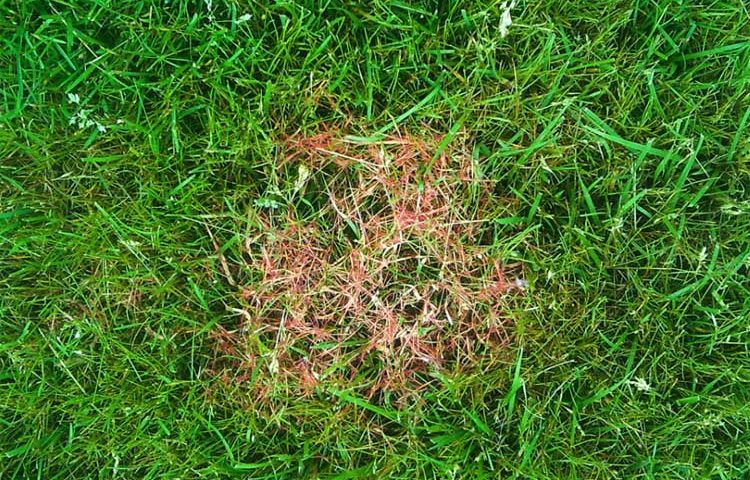Snow mold is a lawn disease which can affect regions that experience cold winters with moderate amounts of snowfall. During the winter months, our lawns will enter a dormancy phase in an effort to preserve water and nutrients. When winter eventually ends and the weather begins to warm up, we want our lawns to bounce back from dormancy as quickly as possible. In some cases, the snow melts from your lawn but leaves white, gray, or even pink patches behind. This could be a first sign that snow mold is present within your lawn. Although its presence can be ugly at first, it doesn’t mean that your lawn is completely destroyed.
How to Identify Snow Mold
Snow mold, also commonly referred to as “snow rot”, is a fungus that can damage or kill grass after snow melts. You would almost always see snow mold during the spring, as the fungal spores need warmer temperatures between 32 and 45°F to become active. There are two different species of snow mold, both of which are identified by color: gray and pink. When the snow does melt, you might either see the mold itself or straw-like patches of grass that the mold has killed.
Generally, these patches will be circular in shape and will range in size from a couple of inches to a couple of feet in diameter. The diseased patches are also likely to be noticeably matted and crunchy. Snow mold can develop on any type of cool-season turfgrass that is covered by snow for long periods of time. This means that the lawns in our region are prone to developing snow mold.
Treatment And Prevention
Unfortunately, once you have noticed that snow mold has made an appearance in your lawn, the damage is already done. There aren’t any fully reliable or effective fungicide treatments that work on snow mold in the spring when the snow melts. This means that the primary key to removing snow mold is by preventing it from growing in the first place. It is important to first understand the conditions that influence the development of snow mold in order to avoid its effects entirely. If you find that your lawn has already been damaged by snow mold, it is best to just gently rake the affected areas and re-seed them accordingly.
Some ways to prepare your lawn accordingly in the fall include:
- Applying a preventative fungicide
- Mowing before the the first snowfall
- Preventing leaves and snow from piling up
- Ensuring your lawn has proper drainage
- Avoid fertilizing in the late fall
If you are having trouble with any of the issues related to snow mold, or perhaps another problem pertaining to your lawn, you might begin seeking out the help of an expert lawn care service. Blue Grass Lawn Services specializes in lawn care treatment and prevention in New Jersey and Pennsylvania. We can work with you to develop a personalized plan so that your lawn remains healthy and looking its best throughout the entire year.
